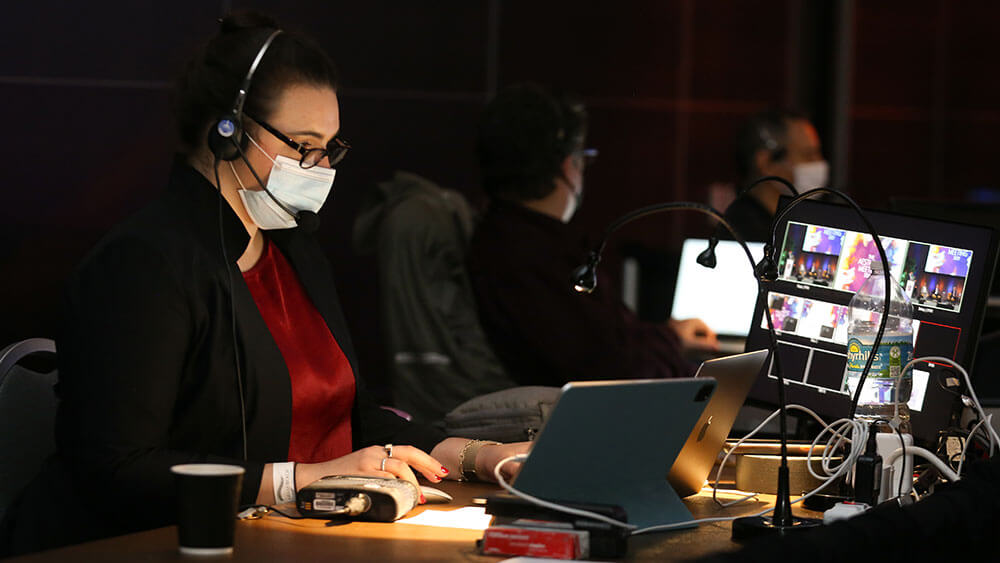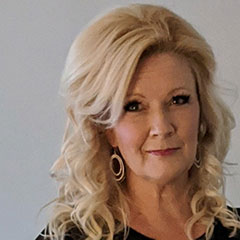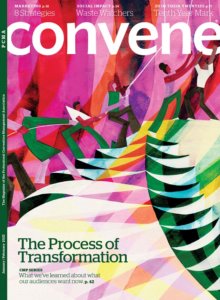
After finding success with its first-ever hybrid annual meeting in 2021 (above), The Aesthetic Society continues to use the format.
Convene editors reached out to a handful of organizations to see how they are incorporating lessons learned from the ways the pandemic affected their audiences, stakeholders, and members into their go-forward strategies. This is one in a series of stories from the January/February issue of Convene.
In July 2021, when Convene checked in with the team behind The Aesthetic Meeting — the annual event of The Aesthetic Society and The Aesthetic Surgery Education and Research Foundation — they had just successfully pulled off their first-ever hybrid program. Held online and in person in Miami Beach over five days, the 2021 meeting attracted 714 attendees on site and 515 online, a mix of plastic surgeons and health-care providers in aesthetics, plus medical students, residents, and fellows. At the time, the Aesthetic Society made the decision to offer both formats at the same registration price to afford attendees more flexibility if they changed their minds about whether to attend in person or virtually, as well as to give themselves enough financial bandwidth to produce a high-quality digital experience.
“The value of our education is the same and we did not want to diminish that by offering lower fees for virtual participation,” Executive Director Sue Dykema, CAE, told Convene at the time. “My dream would be for everyone to adopt that pricing model. People tend to think virtual should be ‘less expensive,’ but the cost to offer virtual is above and beyond normal audiovisual expense and adds cost for the organizer.”
When Convene contacted The Aesthetic Society again in December 2022, that hybrid format had staying power — equal pricing and all. The Aesthetic Meeting 2022 was held in San Diego and online April 20-24, and the team plans to keep it going in 2023, but with a few tweaks from the first iteration. For example, to better serve the needs of its audience, The Aesthetic Society has removed exhibitors entirely from the online experience to focus on “pure content,” said Kathleen McClemmy, CMP, the society’s director of meetings. Engagement from the online audience has waned, she added, so her team plans to watch closely in 2023 to see what changes they can make to encourage more participation.

We’re allowing things to happen in the booth that maybe we weren’t so flexible on in the past so that the doctors are getting a more visual and interactive experience. I’m all for it if it’s something that’s going to benefit both the surgeons and our exhibitors.”
RELATED: How The Aesthetic Society Found Success With its First Hybrid Event
As for the in-person component, The Aesthetic Meeting will return to Miami in April 2023, and McClemmy anticipates that on-site attendance will hit or possibly surpass a peak of 1,450 in 2019. However, she also sees a new hurdle in front of that goal — long visa wait times for international attendees. Typically, The Aesthetic Meeting has a large contingency from South America, but visitors traveling from several countries, including Brazil, have reported delays of more than 400 days for visitor visas, according to the U.S. Travel Association.
Despite the fact that the number of exhibitors participating in The Aesthetic Meeting has stayed strong — topping 1,000 in 2022, up from 972 in 2021 — their physical footprint is shrinking. “Even though the booth sizes are reduced, their hotel room blocks are the same, so whether they’re just not bringing all that freight in because of freight expenses, but are still bringing people, has yet to be determined,” McClemmy said.
McClemmy has found that attendees want to engage more deeply with their content in the past three years. “People need and want more discussion time, more involvement in the actual education as opposed to being just lectured to,” she said. That extends to the exhibition hall as well, where McClemmy and her team are giving exhibitors more flexibility for show-and-tell, like hands-on demonstrations and lunch-and-learn sessions.
“We’re allowing things to happen in the booth that maybe we weren’t so flexible on in the past so that the doctors are getting a more visual and interactive experience,” McClemmy said. “I’m all for it if it’s something that’s going to benefit both the surgeons and our exhibitors.
“Now, we’re all in a position where we’re kind of getting ‘back to normal,’ if you will,” she continued. “And it’s a time [when] we all have to kind of start feeling a little uncomfortable about how we’re running our meetings and trying things that may fail or succeed but being okay with that to address a new world and a new audience.”
Jennifer N. Dienst is senior editor at Convene.

The Complete January/February CMP Series
- AMDA’s Journey to Meeting Back In Person
- Medical Society Finds Success by Getting Uncomfortable
- How Short-Term Activations Can Create Lasting Positive Change
- Breaking Through the Mindset of Digital vs. In-person Events
- Finding the ‘Sweet Spot’ for Anesthesiologist Group’s Annual Meeting
- Science Group’s Hybrid Meetings Improve Access, Affordability
- Acquisition of a Fan Expo Opens Doors for Nonprofit
